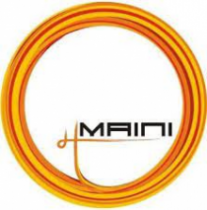Plastic Compounding Market Nears $935 Billion by 2026 - Comprehensive Industry Analysis Including Profiles on Leading Players & Key Strategic Developments - ResearchAndMarkets.com
The "Plastic Compounding Market Forecast by Polymer Type, Polyethylene, Polyvinyl Chloride and End Use: Global Opportunity Analysis and Industry Forecast, 2019-2026" report has been added to ResearchAndMarkets.com's offering.
The global plastic compounding market was valued at $ 565,416.7 million in 2018 and is projected to reach $ 932,330.5 million by 2026, growing at a CAGR of 6.4% from 2019 to 2026.
Report Scope
- This report outlines the current trends and future scenario of the market from 2018 to 2026 to understand the prevailing opportunities and potential investment pockets.
- The key drivers, restraints, and opportunities and their detailed impact analyses are elucidated in the study.
- Major countries in the region have been mapped according to their individual revenue contribution to the regional market.
- Porter's five forces analysis helps to analyze the potential of buyers & suppliers and the competitive scenario of the industry for strategy building.
-
The profiles of key players along with their key strategic developments are enlisted in the report.
Key Findings
- Based on region, the Asia-Pacific plastic compounding market share is predicted to account for a share of 42.31% by the end of 2026.
- Based on polymer type, the polypropylene segment is expected to account for a share of 23.29% by the end of 2026.
Rapid industrialization as well as urbanization and expansion of automotive, electronics & electrical and construction industries are some of the key factors that supplement the growth of the plastic compounding market.
Moreover, plastic is used in the construction sector in floorings, insulation materials, storage tanks, performance safety windows, doors, pipes, and cables. This factor has led to increase in demand for plastic compounds and is expected to drive the growth of the market.
In addition, owing to the properties such as light weight, resistance to fatigue and better chemical and temperature resistance have led to increase in use of plastic compound in automobile and electronic and electrical industries. This factor is anticipated to increase the demand for plastic compounds in future.
Based on polymer type, the market is segmented into polypropylene (PP), polyethylene (PE), polyvinyl chloride (PVC), polystyrene (PS) and expanded polystyrene (EPS), polyethylene terephthalate (PET), polyurethane (PU), acrylonitrile butadiene styrene (ABS), and other polymers. The polypropylene is widely used in automotive applications owing to the properties such as light weight, good fatigue resistance, and resistance to chemical and high temperature.
Based on end use, the market is segmented into automotive, building and construction, packaging, electrical & electronics, medical and others. The packaging segment is expected to grow owing to increase in expenditure of consumers and improvement in standard of living that has fueled the demand for packaged food & beverages across developing countries such as China and India. In addition, growing demand for automobiles across Asia-Pacific and European region has also increased the demand for plastic compounds in packaging of automotive interiors. These factors are projected to increase the plastic compounding market growth, which positively impacts this market.
Based on region, the plastic compounding market trends is analyzed across North America, Europe, Asia-Pacific, and LAMEA. Asia-Pacific accounts for a major share in the market due to increase in demand for plastic compounds in the developing economies such as India and China, owing to development of the construction, automotive and electronic & electrical industries. This factor is anticipated to increase the Asia-Pacific plastic compounding market size from 2019 to 2026.
Market players have adopted expansion, acquisition, and collaboration as their key strategies to gain competitive advantage in the plastic compounding industry. The key players operating in the market include Asahi Kasei Corporation, BASF SE, Celanese Corporation, Covestro AG, DowDuPont Inc., Kingfa Sci. and Tech. Co., Ltd., LyondellBasell Industries Holdings B.V., Polyone Corporation, SABIC and Solvay SA.
Key Topics Covered
CHAPTER 1: INTRODUCTION
CHAPTER 2: EXECUTIVE SUMMARY
2.1. Key findings
2.1.1. Top investment pockets
2.2. CXO perspective
CHAPTER 3: MARKET OVERVIEW
3.1. Market definition and scope
3.1.1. Parent Market Overview
3.2. Key Forces Shaping PLASTIC COMPOUNDING Market
3.2.1. Moderate bargaining power of suppliers
3.2.2. Moderate threat of new entrants
3.2.3. Moderate threat of substitutes
3.2.4. Moderate intensity of rivalry
3.2.5. Low bargaining power of buyers
3.3. Pricing Analysis
3.3.1. Pricing Analysis By Region, 2018 & 2026
3.4. Value Chain Analysis
3.5. Impact of government regulations on global plastic compounding market
3.6. Patent Analysis
3.6.1. By Region (2012-2018)
3.7. Case Studies
3.7.1. Case Study 01
3.7.2. Case Study 02
3.8. Market dynamics
3.8.1. Drivers
3.8.1.1. Surge in production of light weight automobiles
3.8.1.2. Surge in infrastructure development
3.8.2. Restraints
3.8.2.1. Increase in prices of plastic compounds
3.8.2.2. Harmful impact of VOCs present in the coating
3.8.3. Opportunities
3.8.3.1. Advancement in filler material technology
CHAPTER 4: PLASTIC COMPOUNDING MARKET, BY POLYMER TYPE
4.1. Overview
4.2. Polypropylene
4.3. Polyethylene
4.4. Polyvinyl Chloride
4.5. Polystyrene & Expanded Polystyrene
4.6. Polyethylene Terephthalate
4.7. Polyurethane
4.8. Acrylonitrile Butadiene Styrene
4.9. Other Polymers
CHAPTER 5: PLASTIC COMPOUNDING MARKET, BY END USE
5.1. Overview
5.2. Packaging
5.3. Building & Construction
5.5. Automotive
5.6. Electrical & Electronics
5.7. Medical
5.8. Others
CHAPTER 6: PLASTIC COMPOUNDING MARKET, BY REGION
6.1. Overview
6.2. North America
6.3. Europe
6.4. Asia-Pacific
6.5. LAMEA
CHAPTER 7: COMPETITIVE LANDSCAPE
7.1. Introduction
7.2. Top Winning Strategies
7.3. Product Mapping of Top 10 Players
7.4. Competitive Heatmap
7.5. Key Developments
CHAPTER 8: COMPANY PROFILES
8.1. Asahi Kasei Corporation
8.2. BASF SE
8.3. Celanese Corporation
8.4. COVESTRO AG
8.5. DowDuPont Inc.
8.6. Kingfa Sci. and Tech. Co. Ltd.
8.7. LyondellBasell Industries Holdings B.V.
8.8. Polyone Corporation
8.9. SABIC
8.10. Solvay S.A.
8.11. Other Key Player Profiles
For more information about this report visit https://www.researchandmarkets.com/r/nty06y
View source version on businesswire.com: https://www.businesswire.com/news/home/20190822005316/en/




